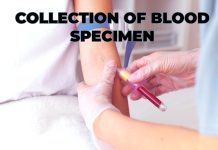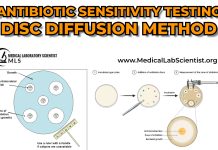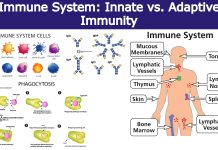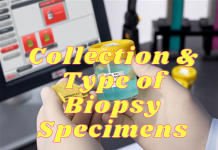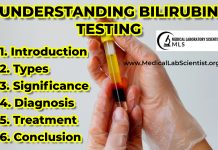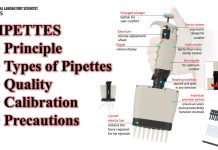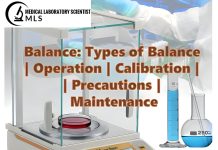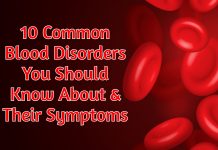Advances in CAR-T Cell Therapy for Blood Cancers
The Crucial Role of Medical Laboratory Testing
Few medical innovations have captured the imagination like CAR-T cell therapy, a revolutionary approach to treating blood cancers such as leukemia, lymphoma, and multiple myeloma. As of February 25, 2025, this immunotherapy has evolved from a bold experiment into a transformative treatment, offering hope to patients facing advanced disease. For medical laboratory professionals, CAR-T represents more than a clinical milestone—it’s a field where testing expertise shapes every step, from patient eligibility to long-term outcomes. This 2000-word article explores how advances in CAR-T cell therapy rely on medical laboratory testing, making it a perfect topic to boost your lab-focused blog’s reach among technicians, students, and healthcare enthusiasts.
What is CAR-T Cell Therapy?
CAR-T, short for Chimeric Antigen Receptor T-cell therapy, is a personalized form of immunotherapy that turns a patient’s own T-cells into cancer-killing machines. The process begins with apheresis, a procedure that extracts T-cells—key players in the immune system—from a patient’s blood. These cells are then sent to a specialized laboratory, where they’re genetically modified to express a CAR, a synthetic receptor designed to bind to specific proteins on cancer cells, such as CD19 in B-cell leukemias or BCMA in multiple myeloma. Once reinfused into the patient, these engineered T-cells multiply rapidly, seek out malignant cells, and destroy them with precision.
The therapy’s journey started with Kymriah (tisagenlecleucel), approved by the FDA in 2017 for acute lymphoblastic leukemia (ALL) in children and young adults. Since then, approvals have expanded: Yescarta (axicabtagene ciloleucel) for diffuse large B-cell lymphoma (DLBCL), Tecartus for mantle cell lymphoma (MCL), Brexucabtagene for relapsed ALL, and Carvykti for multiple myeloma. By 2025, CAR-T is pushing boundaries, with clinical trials exploring new cancer targets and delivery methods. For labs, this isn’t just a patient success story—it’s a testing marathon, where diagnostics are the unsung heroes driving each phase forward.
Pre-Treatment Testing: Labs Lay the Groundwork
Before a patient can receive CAR-T therapy, medical laboratories perform an extensive array of tests to confirm eligibility and ensure safety. This pre-treatment phase highlights the lab’s pivotal role as the first checkpoint.
1. Complete Blood Count (CBC) with Differential:
Using automated hematology analyzers like the Sysmex XN or Beckman Coulter DxH, labs measure white blood cell counts, hemoglobin, hematocrit, red blood cells, and platelets. These metrics assess whether a patient can withstand apheresis and the lymphodepleting chemotherapy often used to prepare the body for CAR-T infusion. A neutrophil count below 1000 per microliter or platelets under 75,000 might delay treatment, requiring precise, rapid results.
2. Flow Cytometry for Immunophenotyping:
Blood cancers express distinct surface antigens—CD19 and CD22 in B-cell ALL, CD20 in DLBCL, or CD38 in myeloma. Flow cytometry, a cornerstone of hematology labs, uses multi-color antibody panels (often 8- or 10-color) to detect these markers, verifying the cancer’s suitability for CAR-T targeting. Labs quantify antigen density to ensure adequate expression; low levels could reduce efficacy, while co-expression patterns refine the diagnostic picture.
3. Molecular Diagnostics:
Beyond surface markers, labs dive into the cancer’s genetic makeup. Real-time polymerase chain reaction (RT-PCR) identifies fusion genes like BCR-ABL in Philadelphia chromosome-positive ALL, while next-generation sequencing (NGS) detects mutations such as TP53, FLT3, or RUNX1 that might predict resistance or relapse. These tests, run on peripheral blood or bone marrow aspirates, provide oncologists with critical prognostic data.
4. Infectious Disease Screening:
CAR-T suppresses immunity, heightening infection risks. Labs screen for viruses like HIV, hepatitis B and C, cytomegalovirus (CMV), Epstein-Barr virus (EBV), and herpes simplex using serological assays (e.g., ELISA for antibodies) and nucleic acid testing (NAT) for viral DNA or RNA. Positive results don’t always exclude patients but trigger preventive measures, such as acyclovir for herpes or monitoring CMV via quantitative PCR.
5. Biochemistry and Organ Function Tests:
Chemistry labs assess liver function with tests like alanine aminotransferase (ALT), aspartate aminotransferase (AST), alkaline phosphatase (ALP), and bilirubin, alongside renal function via creatinine, blood urea nitrogen (BUN), and electrolytes (sodium, potassium, calcium). Poor organ performance—say, a glomerular filtration rate (GFR) below 40 mL/min—could complicate therapy, making these routine assays unexpectedly vital.
6. Coagulation Profile:
Labs measure prothrombin time (PT), activated partial thromboplastin time (aPTT), fibrinogen, and D-dimer to evaluate bleeding risk, especially critical during lymphodepletion, which can suppress marrow function. Automated coagulometers deliver fast results, ensuring no underlying coagulopathy jeopardizes the process.
7. Inflammation Baseline:
C-reactive protein (CRP) and erythrocyte sedimentation rate (ESR), tested via turbidimetry or nephelometry, establish a pre-treatment inflammation baseline, setting the stage for later monitoring of therapy-related complications.
These pre-treatment tests weave together hematology, immunology, molecular biology, and chemistry, showcasing the lab’s multifaceted expertise. For technicians, mastering these assays—particularly advanced tools like NGS or high-parameter flow cytometry—means playing a direct role in CAR-T’s success.
Manufacturing CAR-T Cells: Lab Precision at Work
Once T-cells are collected, they enter a manufacturing phase where laboratory techniques ensure a high-quality therapeutic product. Though typically handled by specialized facilities, the principles align with hospital lab practices.
1. Cell Viability and Purity Assessment:
Post-apheresis, labs evaluate T-cell health using trypan blue exclusion or automated cell counters like the Vi-CELL XR. Flow cytometry with CD3, CD4, and CD8 markers confirms a T-cell-dominant sample, filtering out contaminants like monocytes, neutrophils, or residual leukemic cells that could dilute the product’s potency.
2. Genetic Modification Verification:
Lentiviral or retroviral vectors introduce the CAR gene into T-cells. Quantitative PCR (qPCR) or droplet digital PCR (ddPCR) measures transduction efficiency, aiming for 1 to 5 CAR gene copies per cell. Too few copies risk insufficient cancer targeting; too many could amplify toxicity risks like cytokine storms, a balance labs carefully calibrate.
3. Sterility and Endotoxin Testing:
The CAR-T product must be free of contamination. Traditional microbiological cultures detect bacteria, fungi, and mycoplasma over days, but 2025 sees rapid alternatives—PCR-based microbial detection or ATP bioluminescence—cutting turnaround to hours. Endotoxin levels, tested via limulus amebocyte lysate (LAL) assays, must stay below 5 endotoxin units per kilogram to meet safety standards.
4. Potency Testing:
Labs assess the engineered T-cells’ ability to kill cancer cells in vitro, co-culturing them with target lines like Raji (B-cell lymphoma) or K562 (myeloid leukemia). Cytotoxicity is measured via chromium-51 release assays, lactate dehydrogenase (LDH) release, or flow cytometry with annexin V staining, ensuring the product’s cancer-fighting strength.
5. Phenotypic Characterization:
Additional flow cytometry panels check T-cell subsets—memory, effector, or exhausted phenotypes (e.g., PD-1, TIM-3)—which influence persistence and efficacy post-infusion, offering a deeper quality check.
These manufacturing steps demand the same rigor labs apply to clinical diagnostics. Innovations like closed-system bioreactors or real-time genomic analytics could soon bring aspects of CAR-T production closer to hospital labs, amplifying their involvement.
Post-Infusion Monitoring: Labs Track Efficacy and Safety
After infusion, CAR-T cells activate and proliferate, targeting cancer. Labs pivot to monitoring, balancing therapeutic success with complication management.
1. Cytokine Release Syndrome (CRS) Detection:
CRS, a common side effect, arises from massive cytokine release—interleukin-6 (IL-6), tumor necrosis factor-alpha (TNF-α), and interferon-gamma (IFN-γ). Labs quantify these using enzyme-linked immunosorbent assays (ELISA), multiplex bead arrays, or liquid chromatography-mass spectrometry, guiding interventions like tocilizumab or corticosteroids. Routine markers like CRP, ferritin, and LDH, run on high-throughput chemistry analyzers, track CRS severity—ferritin above 2000 ng/mL often signals a critical turn.
2. Neurotoxicity (ICANS) Monitoring:
Immune effector cell-associated neurotoxicity syndrome (ICANS) can follow CRS, presenting as confusion or seizures. Labs test electrolytes (sodium, magnesium, phosphate), liver function (ammonia, bilirubin), and coagulation (PT/INR, D-dimer) to exclude mimics like cerebral hemorrhage or metabolic imbalance. Low magnesium or high ammonia levels often correlate with ICANS severity.
3. Minimal Residual Disease (MRD) Assessment:
MRD testing detects residual cancer at sensitivities of 10^-4 to 10^-6. Flow cytometry identifies aberrant immunophenotypes (e.g., CD19-negative/CD34-positive blasts in ALL), while NGS tracks clonal immunoglobulin or T-cell receptor gene rearrangements. MRD negativity post-CAR-T predicts durable remission, a gold-standard metric for oncologists and a showcase of lab precision.
4. CAR-T Persistence and Immune Effects:
Real-time PCR quantifies circulating CAR-T cells over weeks to months, ensuring they persist to maintain remission. Labs also monitor B-cell aplasia—a sign of CD19-targeted CAR-T activity—via flow cytometry (CD19-/CD20- populations). Immunoglobulin levels (IgG, IgA, IgM), tested by nephelometry or immunoturbidimetry, guide intravenous immunoglobulin (IVIG) therapy for prolonged hypogammaglobulinemia.
5. Long-Term Safety Screening:
Rare complications like vector-induced malignancies or hemophagocytic lymphohistiocytosis (HLH) require extended vigilance. Cytogenetic tests (karyotyping, fluorescence in situ hybridization) and NGS detect chromosomal abnormalities, while HLH markers—triglycerides, fibrinogen, soluble IL-2 receptor (sCD25)—are monitored via chemistry and immunoassays.
6. Infection Surveillance:
Post-infusion immunosuppression prompts labs to retest for CMV, EBV, or fungal infections (e.g., Aspergillus galactomannan) using PCR or antigen assays, ensuring timely treatment.
These post-infusion tests demand both speed—stat processing for CRS—and sensitivity—MRD detection—pushing labs to adopt advanced platforms like automated flow cytometers, point-of-care cytokine kits, or high-throughput sequencers.
Advances Driving CAR-T and Lab Testing in 2025
CAR-T’s evolution is accelerating, and labs are rising to the challenge with innovations that make this a blog-worthy topic:
1. Allogeneic CAR-T Development:
“Off-the-shelf” CAR-T from healthy donors eliminates apheresis delays. Labs will expand HLA typing, T-cell receptor sequencing, and single-cell RNA analysis to prevent graft-versus-host disease, adapting hematology skills to this new frontier.
2. Solid Tumor Exploration:
Trials for glioblastoma, pancreatic cancer, or ovarian cancer target antigens like EGFRvIII, mesothelin, or HER2. Labs will use mass spectrometry, immunohistochemistry, or proteomics to identify these markers, stretching beyond blood cancer expertise.
3. Point-of-Care Diagnostics:
Microfluidic devices and portable qPCR systems could shift CRS monitoring or CAR-T persistence testing to the bedside. Labs will oversee validation, calibration, and quality control for these tools, ensuring reliability in decentralized settings.
4. Artificial Intelligence Integration:
AI is transforming labs—predicting CRS risk from cytokine patterns, automating flow cytometry gating, or optimizing NGS data analysis. Technicians trained in AI tools will lead in efficiency and accuracy.
5. Dual-Target CAR-T Therapies:
To combat antigen escape, therapies targeting two markers (e.g., CD19/CD22 or CD19/BCMA) are emerging. Labs will develop multiplex flow cytometry panels and ddPCR assays to validate these complex constructs, ensuring both targets are hit.
6. Improved Vector Safety:
Non-viral methods like CRISPR or transposons reduce malignancy risks from viral vectors. Labs will adapt genomic assays—whole-genome sequencing or integration site analysis—to monitor these safer approaches.
These advances highlight labs as innovators, not just support players, in CAR-T’s growth—a narrative your readers will find irresistible.
Why This Topic Is Important For Medical Laboratory
CAR-T cell therapy checks every box for a medical lab blog. Patients and families want to understand the tests behind their hope. Lab professionals seek insights into assays—flow cytometry, NGS, cytokine profiling—that enhance their skills and resumes. Students crave real-world examples tying hematology to cutting-edge care. With CAR-T’s market projected to exceed $20 billion by 2030 and its frequent media coverage, search terms like “CAR-T lab testing,” “blood cancer diagnostics,” or “immunotherapy advances” will drive organic traffic to your site in 2025.
Challenges and Opportunities for Labs
CAR-T isn’t without hurdles, and labs are at the forefront of addressing them—another angle to engage your audience:
- Cost and Efficiency: At $400,000+ per treatment, CAR-T strains budgets, pressing labs to streamline testing without sacrificing quality. Automated platforms and multiplex assays could cut costs and time.
- Standardization Gaps: Variability in MRD protocols or cytokine assays across labs sparks debate at 2025 conferences like ASCP or AACC. Labs leading standardization efforts will gain prominence.
- Training Demands: Mastering 10-color flow cytometry, NGS, or rapid sterility testing requires investment in education. Labs offering in-house training or partnering with vendors will stay ahead.
- Rare Complications: Vector-induced cancers or severe HLH remain rare but real risks, necessitating long-term lab vigilance with cytogenetics and inflammatory marker panels.
These challenges are opportunities—labs that innovate with automation, AI, or point-of-care tools will shape CAR-T’s future, offering rich content for your blog.
Conclusion: Labs at the Heart of a Revolution
CAR-T cell therapy exemplifies how medical laboratory testing turns scientific promise into patient survival. From pre-treatment diagnostics to post-infusion monitoring, labs provide the data that makes this therapy work. As 2025 unfolds, advances in allogeneic CAR-T, solid tumor applications, and smarter diagnostics will amplify this role. For your blog, this topic isn’t just timely—it’s a chance to spotlight lab expertise, captivate readers, and grow your platform with a story of science, skill, and hope.






